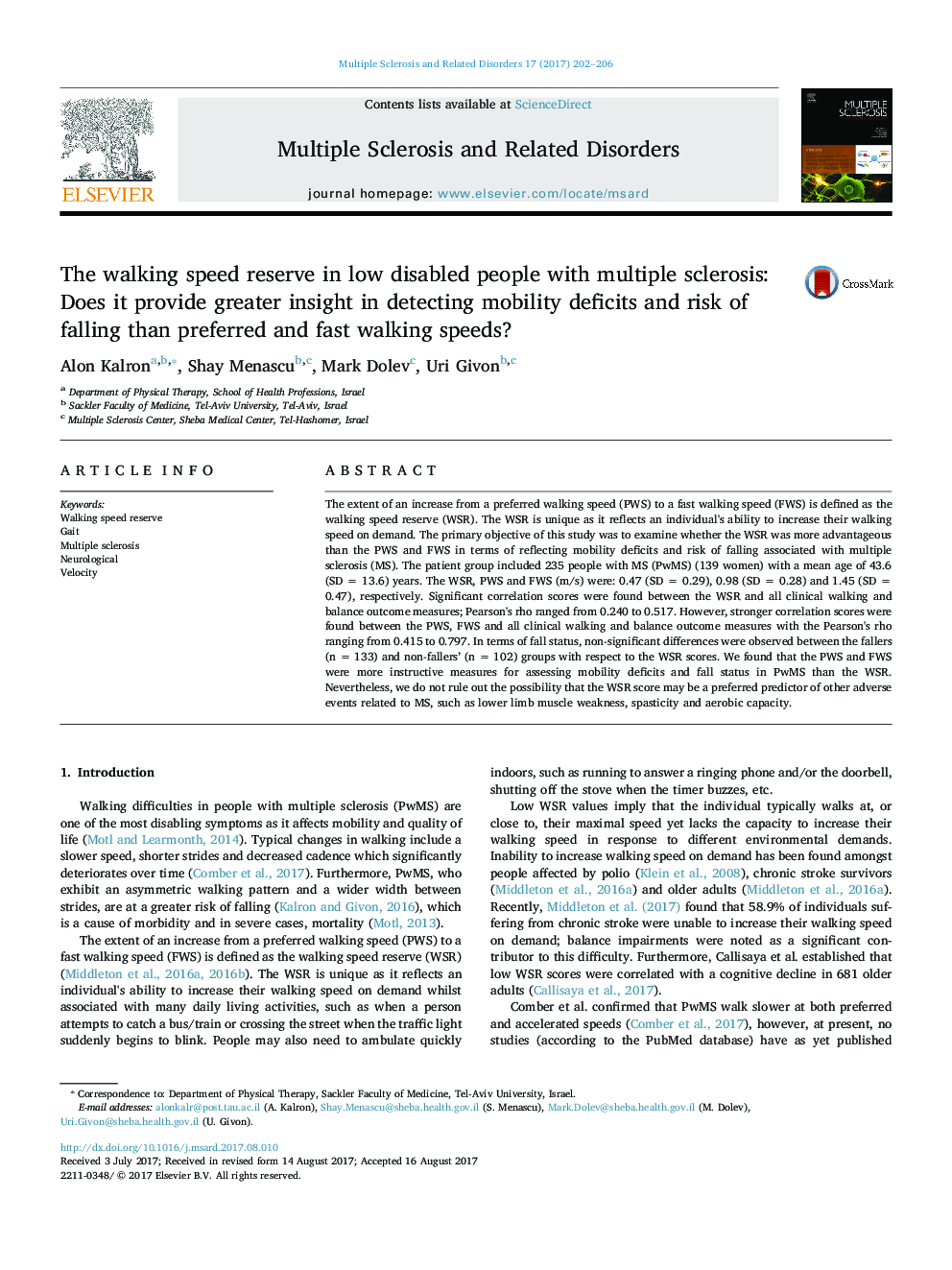| Article ID | Journal | Published Year | Pages | File Type |
|---|---|---|---|---|
| 5590857 | Multiple Sclerosis and Related Disorders | 2017 | 5 Pages |
Abstract
The extent of an increase from a preferred walking speed (PWS) to a fast walking speed (FWS) is defined as the walking speed reserve (WSR). The WSR is unique as it reflects an individual's ability to increase their walking speed on demand. The primary objective of this study was to examine whether the WSR was more advantageous than the PWS and FWS in terms of reflecting mobility deficits and risk of falling associated with multiple sclerosis (MS). The patient group included 235 people with MS (PwMS) (139 women) with a mean age of 43.6 (SD = 13.6) years. The WSR, PWS and FWS (m/s) were: 0.47 (SD = 0.29), 0.98 (SD = 0.28) and 1.45 (SD = 0.47), respectively. Significant correlation scores were found between the WSR and all clinical walking and balance outcome measures; Pearson's rho ranged from 0.240 to 0.517. However, stronger correlation scores were found between the PWS, FWS and all clinical walking and balance outcome measures with the Pearson's rho ranging from 0.415 to 0.797. In terms of fall status, non-significant differences were observed between the fallers (n = 133) and non-fallers' (n = 102) groups with respect to the WSR scores. We found that the PWS and FWS were more instructive measures for assessing mobility deficits and fall status in PwMS than the WSR. Nevertheless, we do not rule out the possibility that the WSR score may be a preferred predictor of other adverse events related to MS, such as lower limb muscle weakness, spasticity and aerobic capacity.
Related Topics
Life Sciences
Biochemistry, Genetics and Molecular Biology
Genetics
Authors
Alon Kalron, Shay Menascu, Mark Dolev, Uri Givon,
